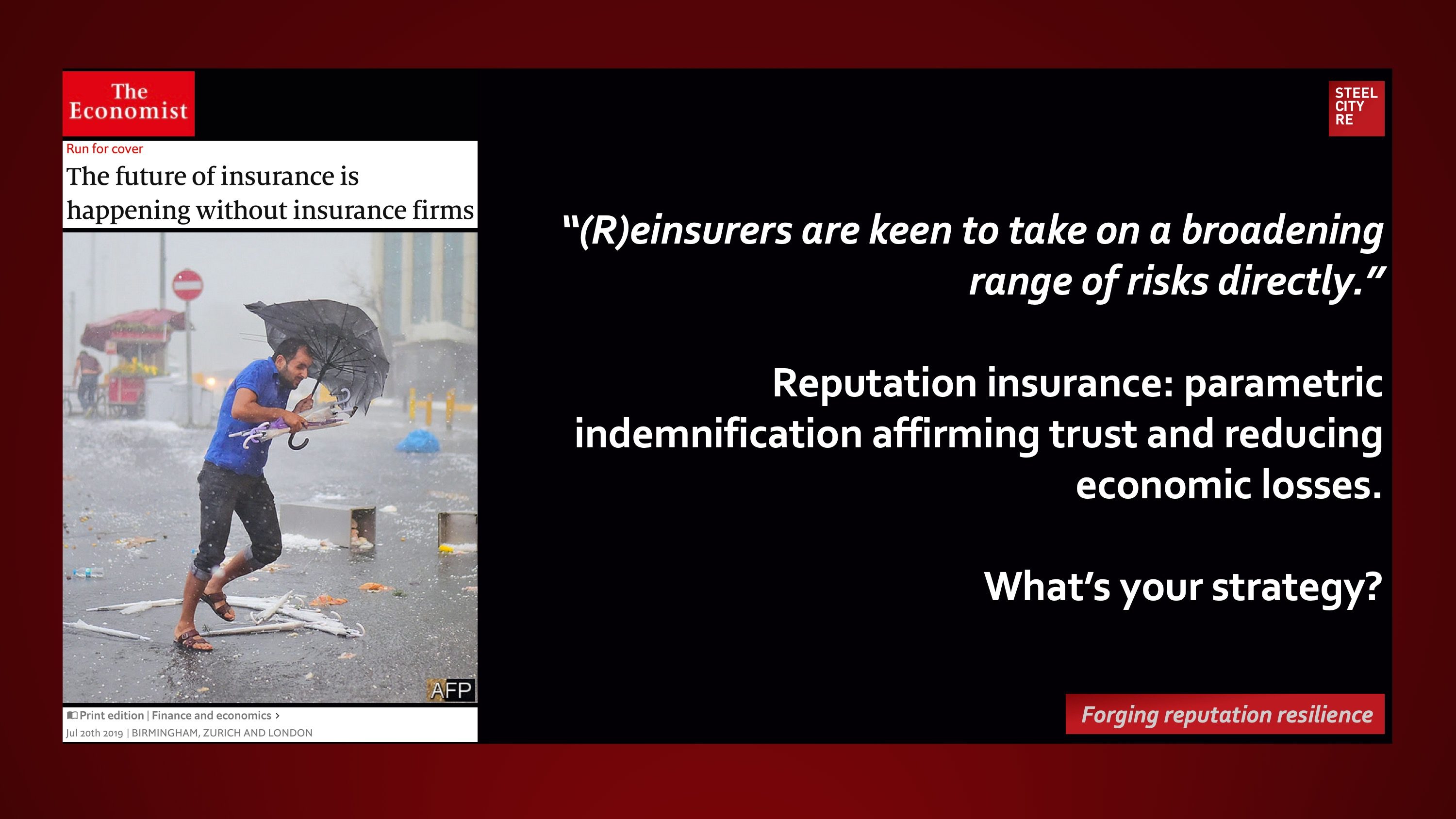“Insurable assets are becoming harder to value and protect, too. In 2018 “tangibles”, such as buildings and equipment, accounted for just 16% of the value of the S&P 500. “Intangibles”, such as intellectual property and reputation, accounted for the other 84%….Insurers’ apathy is energising reinsurers to innovate in their stead…Reinsurers’ greatest breakthrough so far is probably “parametric insurance”. Rather than compensating for losses reported ex-post, such policies pay out a pre-agreed sum when a clearly defined parameter, such as rainfall or seismic magnitude, reaches a pre-agreed threshold.”
Economist
July 24, 2019
“(R)einsurers are keen to take on a broadening range of risks directly, by…cutting primary insurers out altogether.”
Click on Read More for full article.
Reputation insurance: parametric indemnification affirming trust and reducing economic losses.
For a broader view of reputation risk, discover additional articles by Steel City Re here, mentions of Steel City Re here, and comments on newsworthy topics by Steel City Re here. To read an abstracted summary of reputation risk, see below.
Reputations are valuable strategic intangible assets. Threats to these assets⏤ enterprise reputation risks, often mislabeled “brand risks” ⏤ need to be managed, and management needs to be overseen through reputation risk governance lest reputational damage or reputational harm result in long-tailed go-forward losses in economic value and/or political power. Because these intangible risks arise from the interplay of stakeholder expectation, experiences, and media amplification, parametric insurances for intangible asset risks, for reputational value, for reputational harm, and for reputation assurance help mitigate risk by telling a simple, convincing and completely credible story of quality reputation governance to stakeholders. This story telling effect is the expressive power of insurance complementing insurance’s better known instrumental power of indemnification.
Risk management, risk financing in insurance captives, and risk transfer through reputation insurances comprise the constituent elements of a comprehensive solution.
What’s your strategy?

